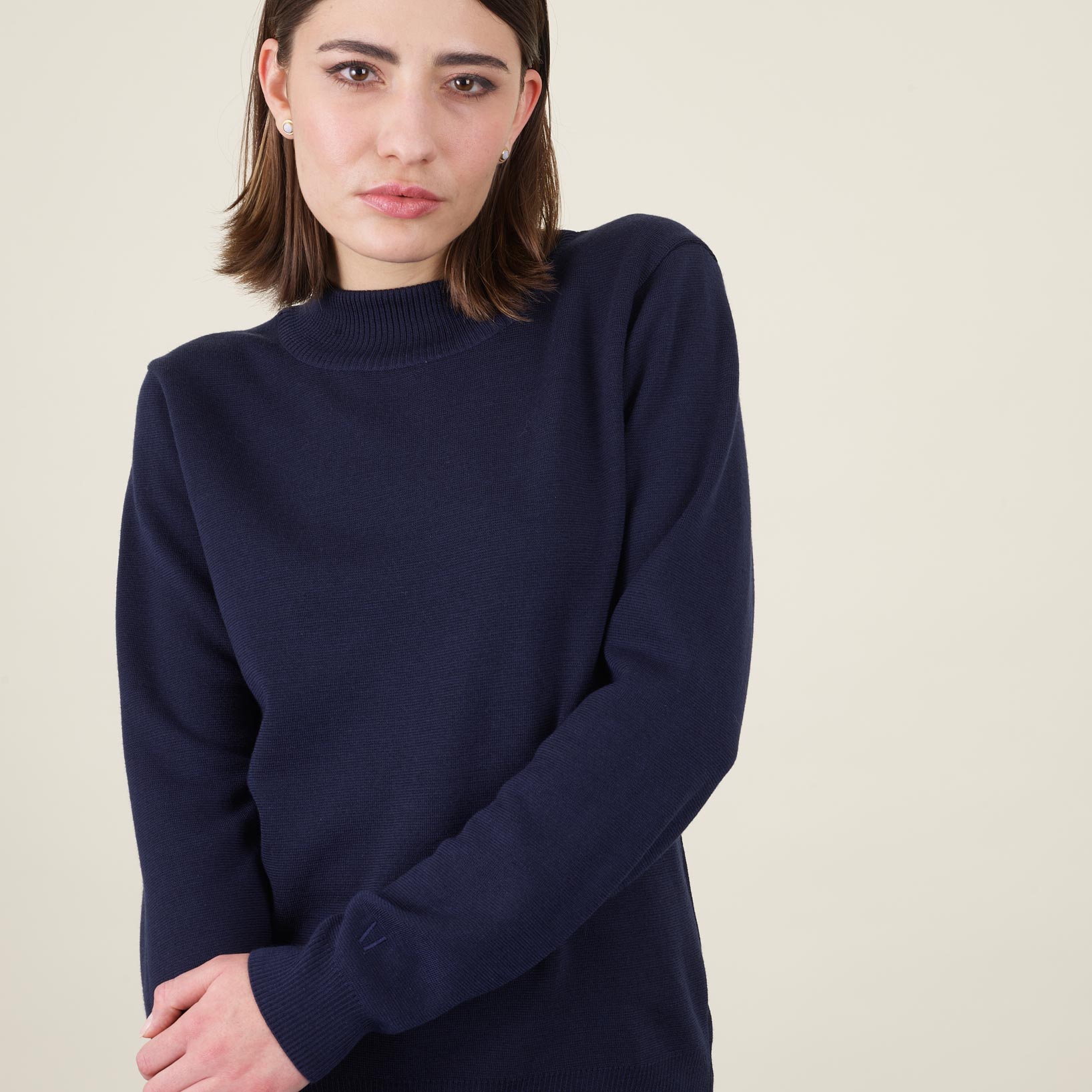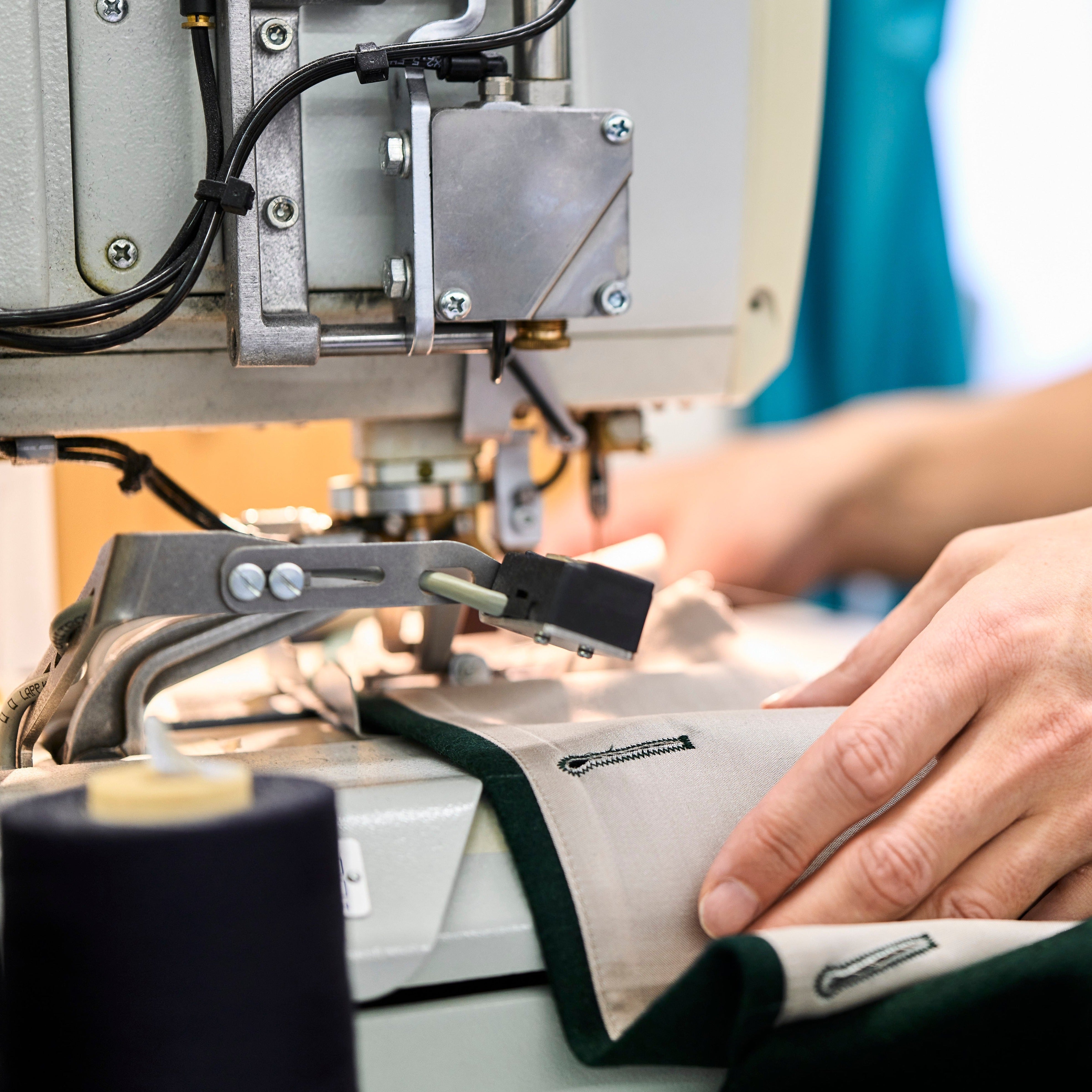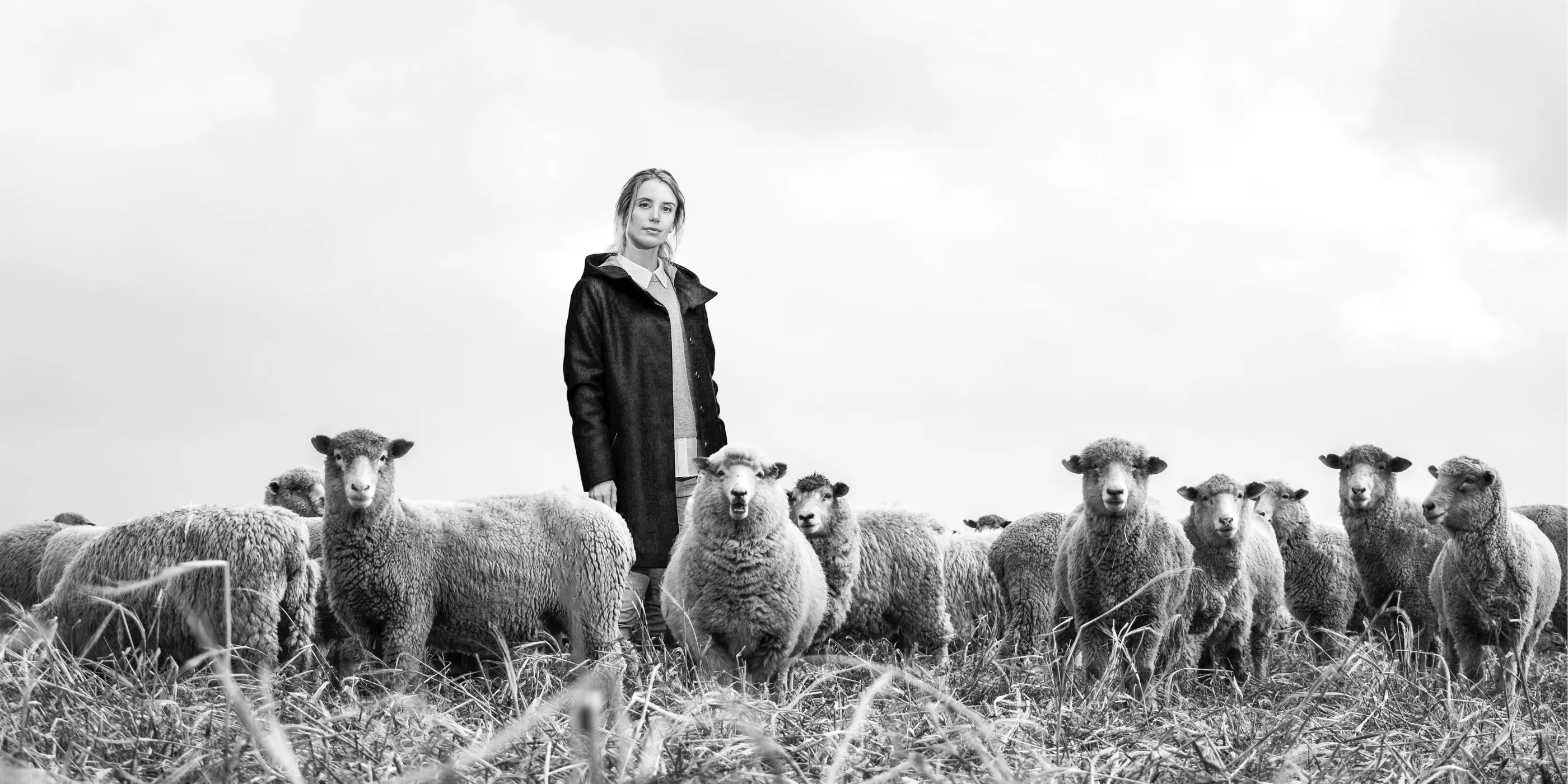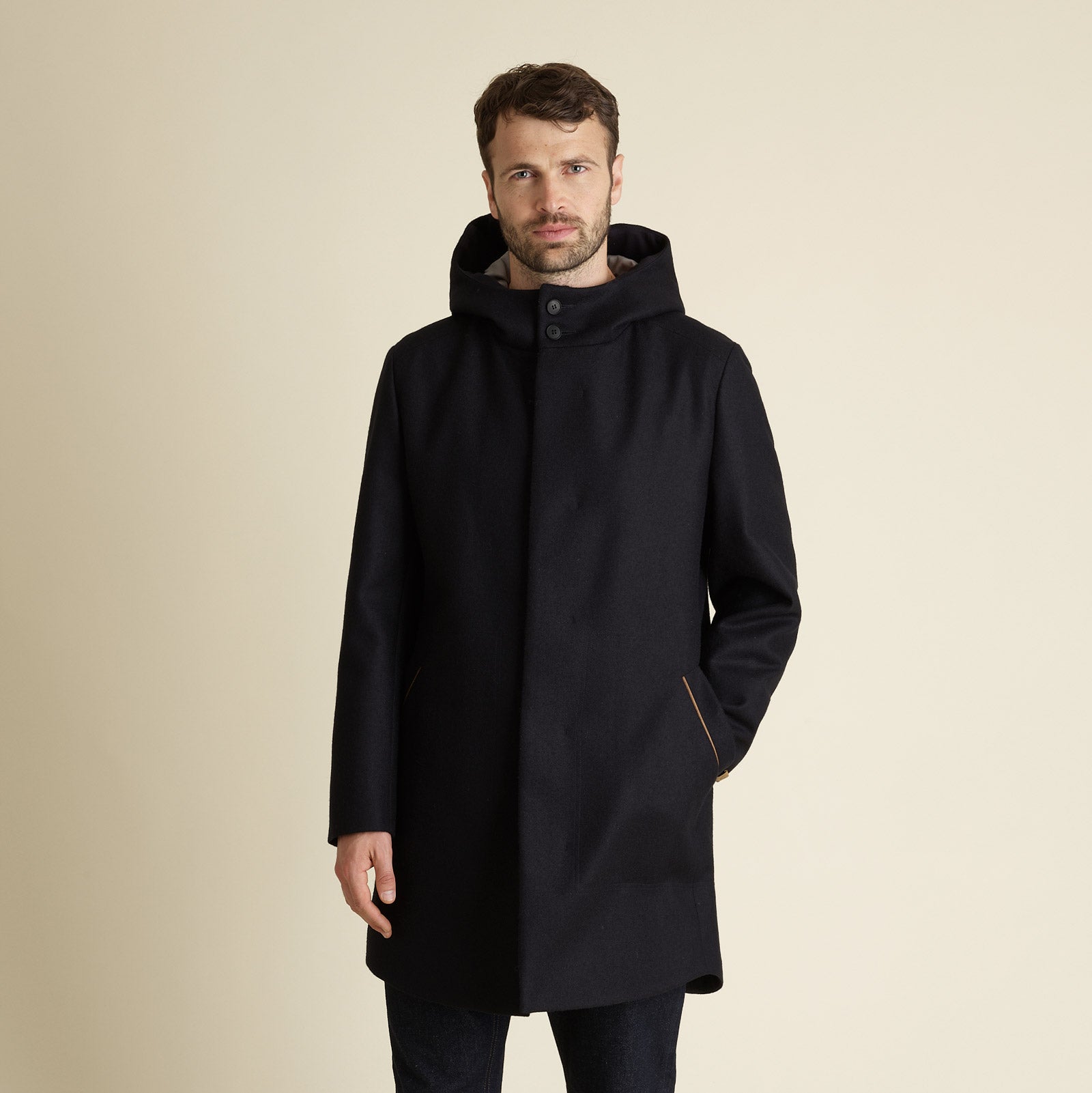A Heritage Material, Reimagined
For a long time, Swiss wool was an untapped treasure. Processing it was considered too complicated, too laborious, and too expensive. But it was clear to us: We wanted to work with this natural, regional resource, and we took on the challenge.
Together with specialized partners from Switzerland and Northern Italy, we have developed a completely new fabric: the Muntagnard Swiss LANA fabric – made exclusively from Swiss wool. This fabric is only available from us and is unique worldwide.
The shorn wool of the white Alpine sheep is collected from farmers throughout Switzerland, sorted in Huttwil, and then washed according to GOTS standards. It is then further processed in northern Italy into our high-quality Swiss LANA fabric.
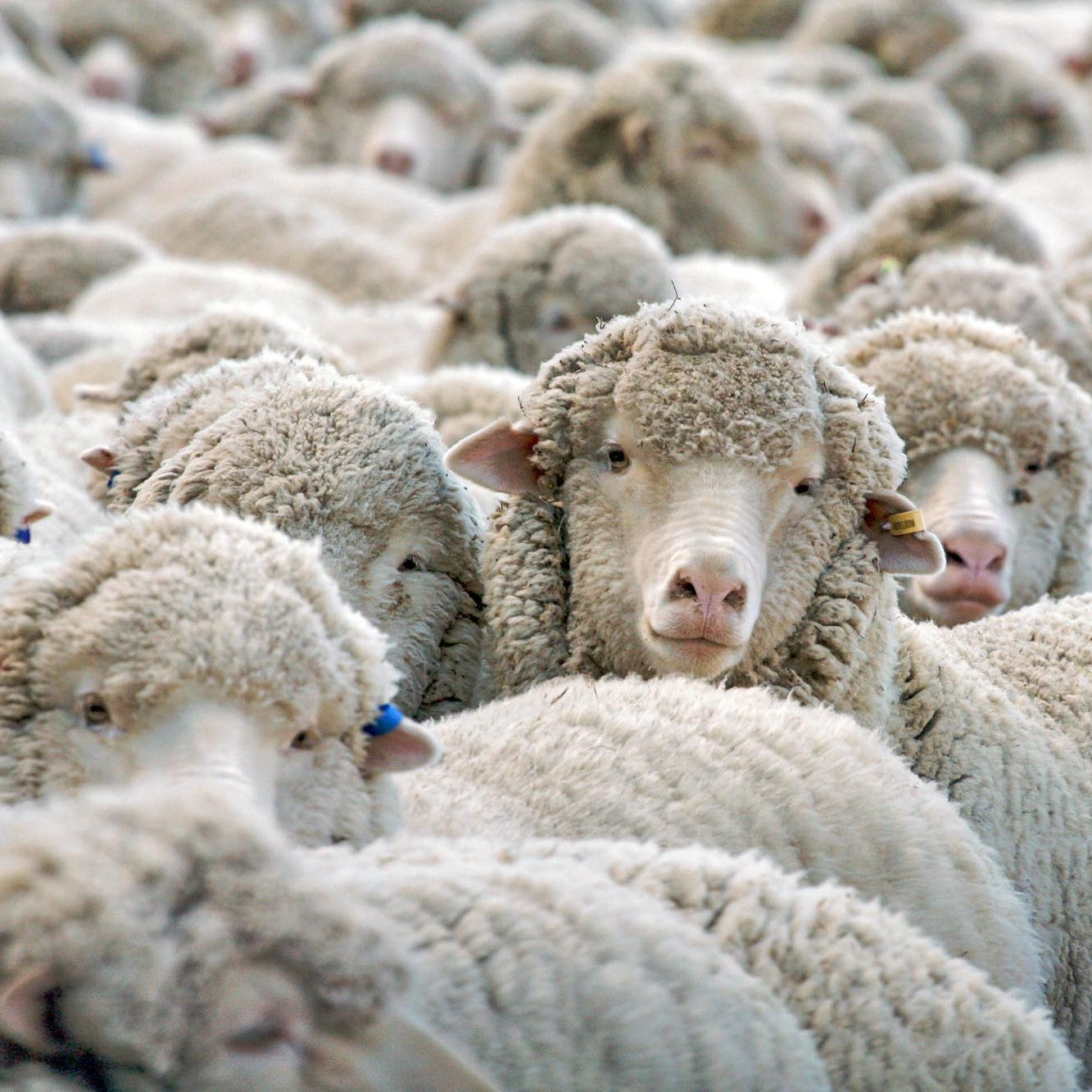
From alpine pastures to refined wool
The shorn wool of the white Alpine sheep is collected from farmers throughout Switzerland, sorted in Huttwil, and then washed according to GOTS standards. The robust fibers are thicker than Merino wool and adapted to harsh climates. Innovation and expertise result in natural, breathable, and temperature-regulating fabrics – entirely synthetic-free.
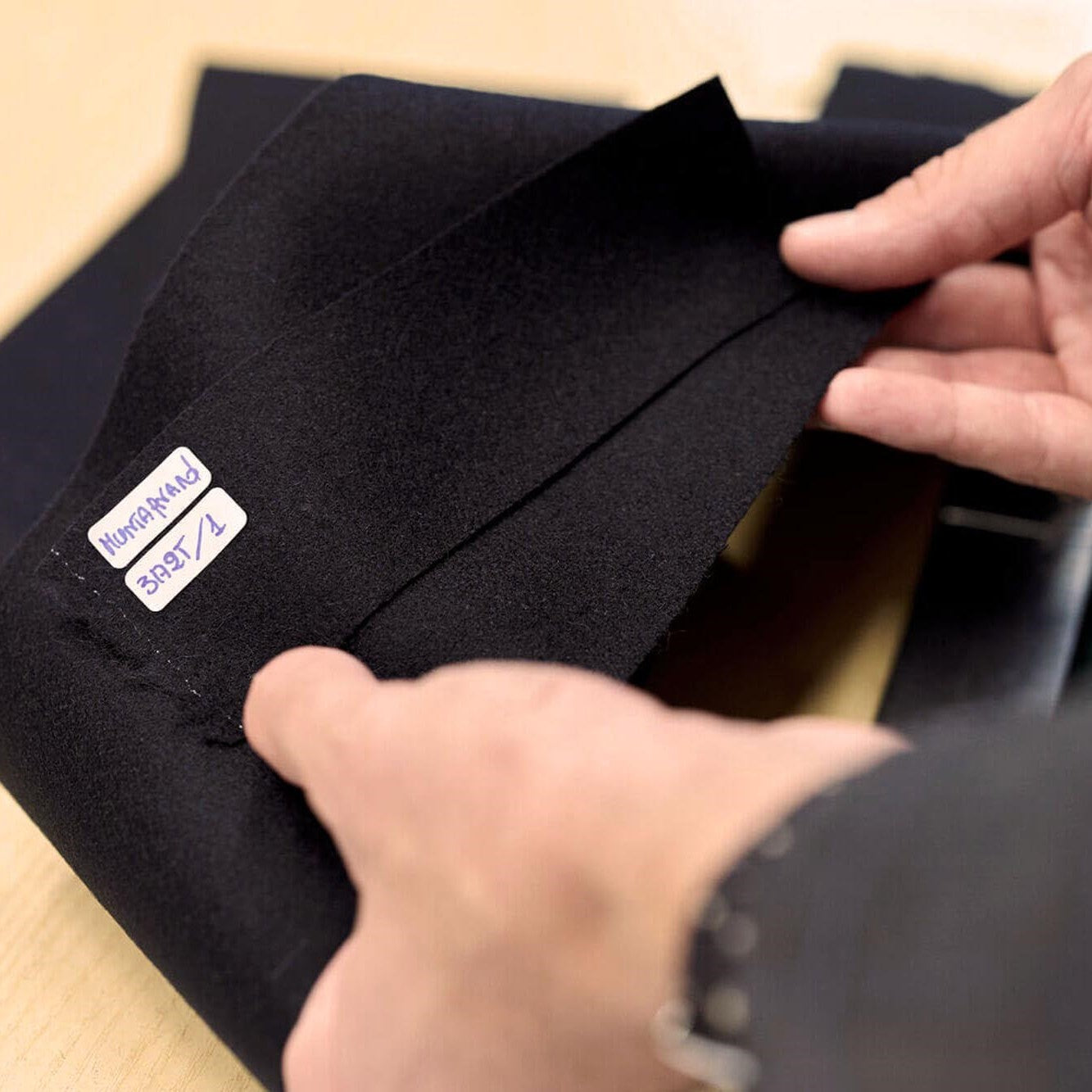
The result: The LANA fabric
LANA is the result of over two years of development – shaped by countless prototypes and close collaboration with Swiss and Italian partners. The result is a fabric made of pure Swiss wool, crafted for a clean structure and elegant cuts. Based on circular design principles, LANA embodies our belief that tradition and innovation can coexist in the same fabric.

Swiss production
When the pandemic paralyzed Europe in 2020, we faced a major challenge. Shortly before production of our first LANA coat was due to start, our production partners in Europe had to close.
We found the solution where we never would have expected it: in Switzerland. In Rothenthurm, we discovered the Schuler Manufaktur – a tailor shop that continues to live Swiss craftsmanship to this day. What began as a stopgap solution turned into one of the most beautiful stories we've ever had the pleasure of writing with Muntagnard.
The Swiss wool coat
It was Muntagnard's first product, and even five years later, the LANA coat has remained true to its material and design, with only the smallest tweaks. We already consider it a timeless classic.
Composition of LANA
4 bio-based elements
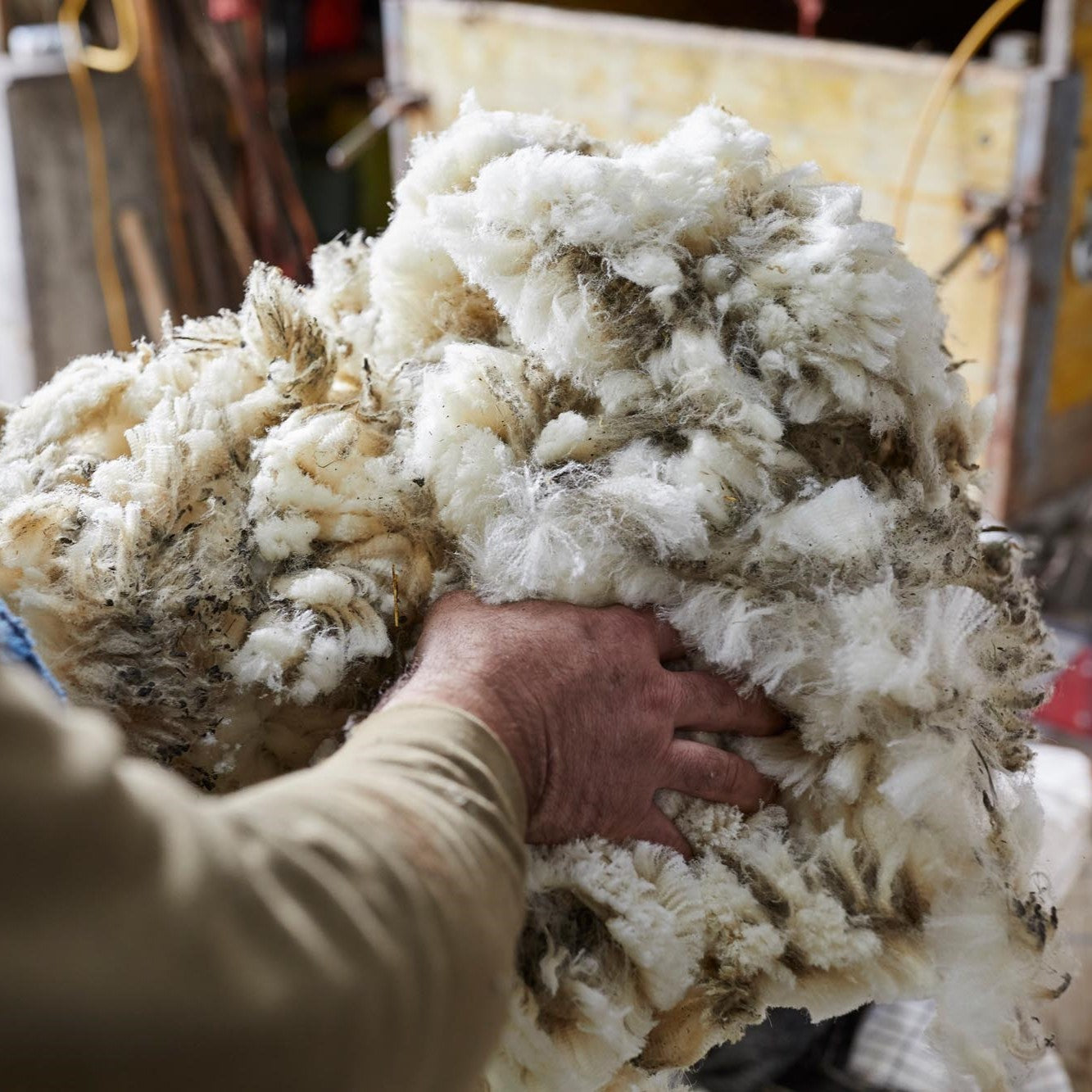
Swiss wool
The specially developed wool fabric provides natural warmth, is breathable and regulates the climate – without synthetic fibers.
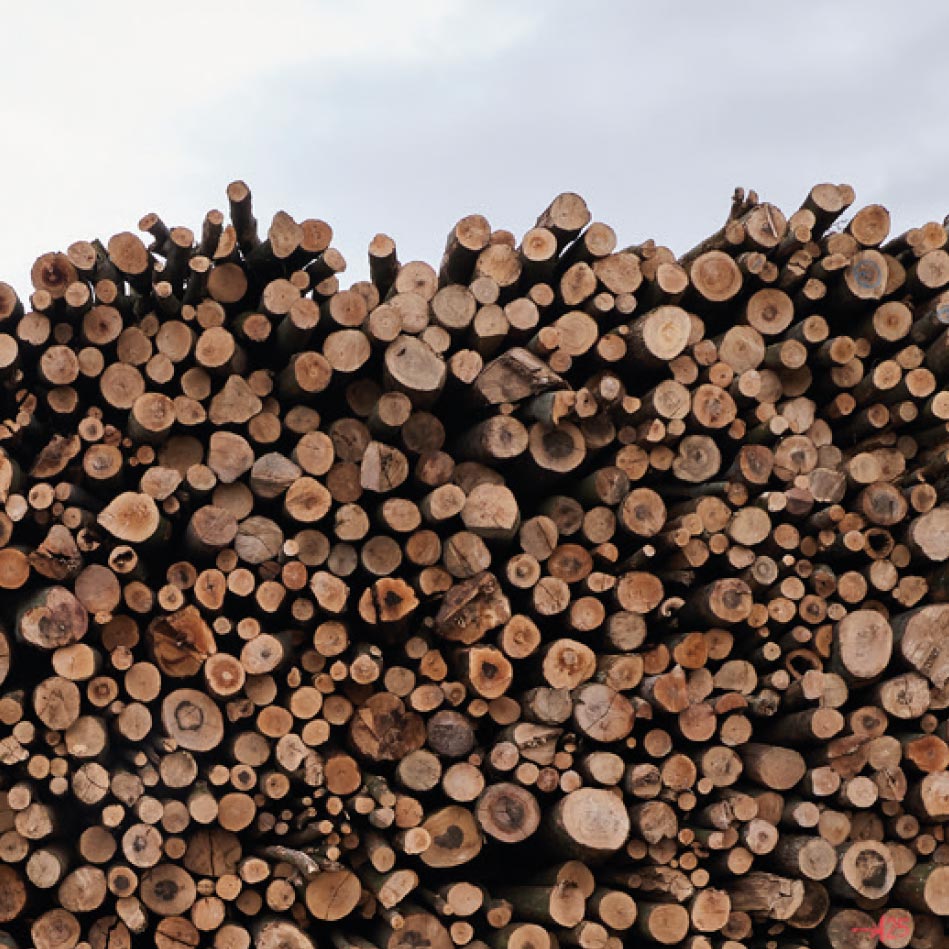
European beech wood
The lining is a silky-soft satin made from 100% European beechwood - pleasant on the skin, sustainably innovative.
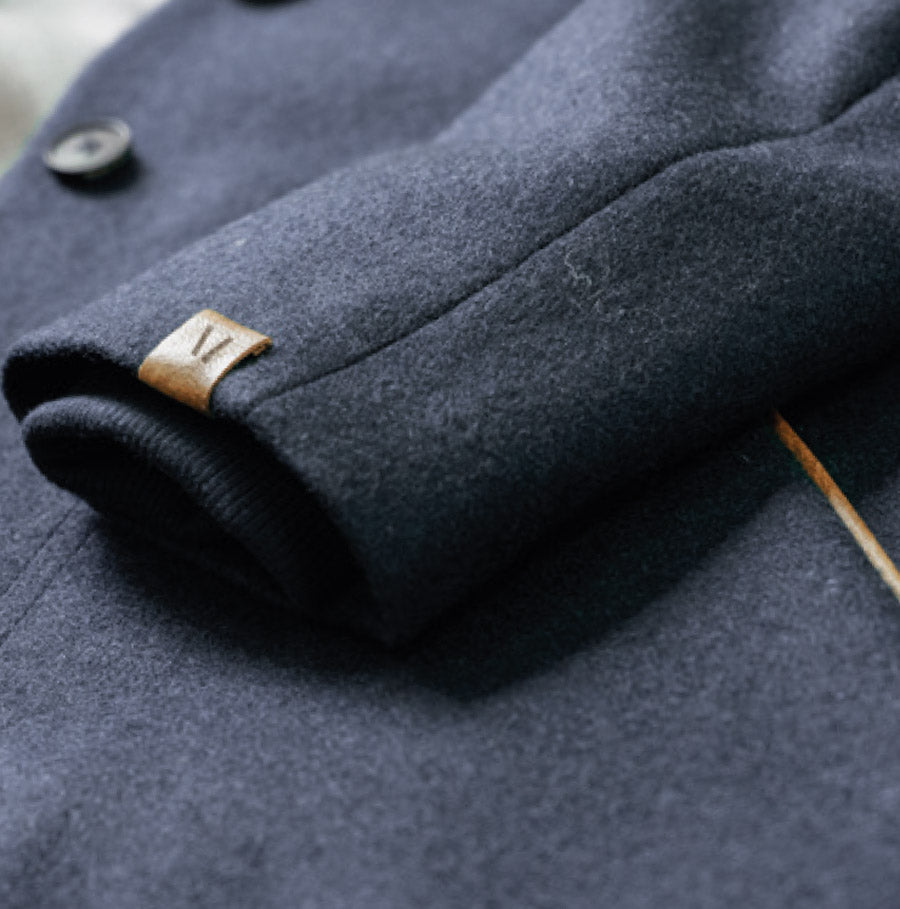
Swiss deerskin
Noble leather elements from Cervo Volante , supple and robust, obtained from normally unused hunting waste - vegetable tanned in Switzerland.
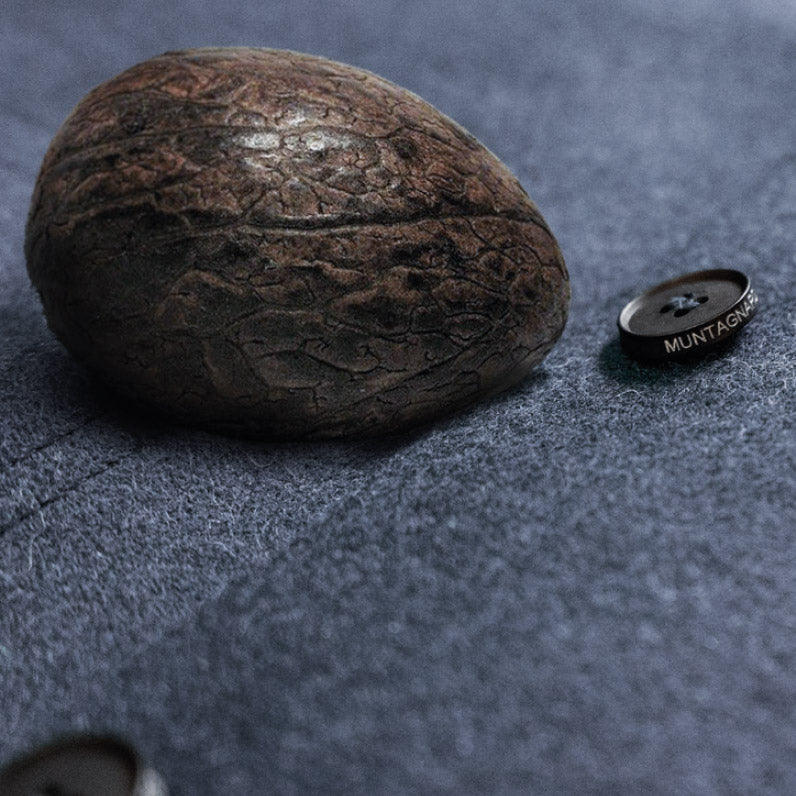
nut instead of zipper
There are no zippers or other plastic or metal parts on the jacket, as even the buttons are made of inedible nuts.
The creation of the LANA jacket

subheading
Why (not) Swiss wool?
Sheep's wool is an excellent natural raw material and is hard to beat in terms of its natural functionality. However, the wool from our Swiss sheep is thicker and more robust than Merino wool. It makes sense: in the mountains they need strong protection. But should we not use the wool for that reason or even burn it?
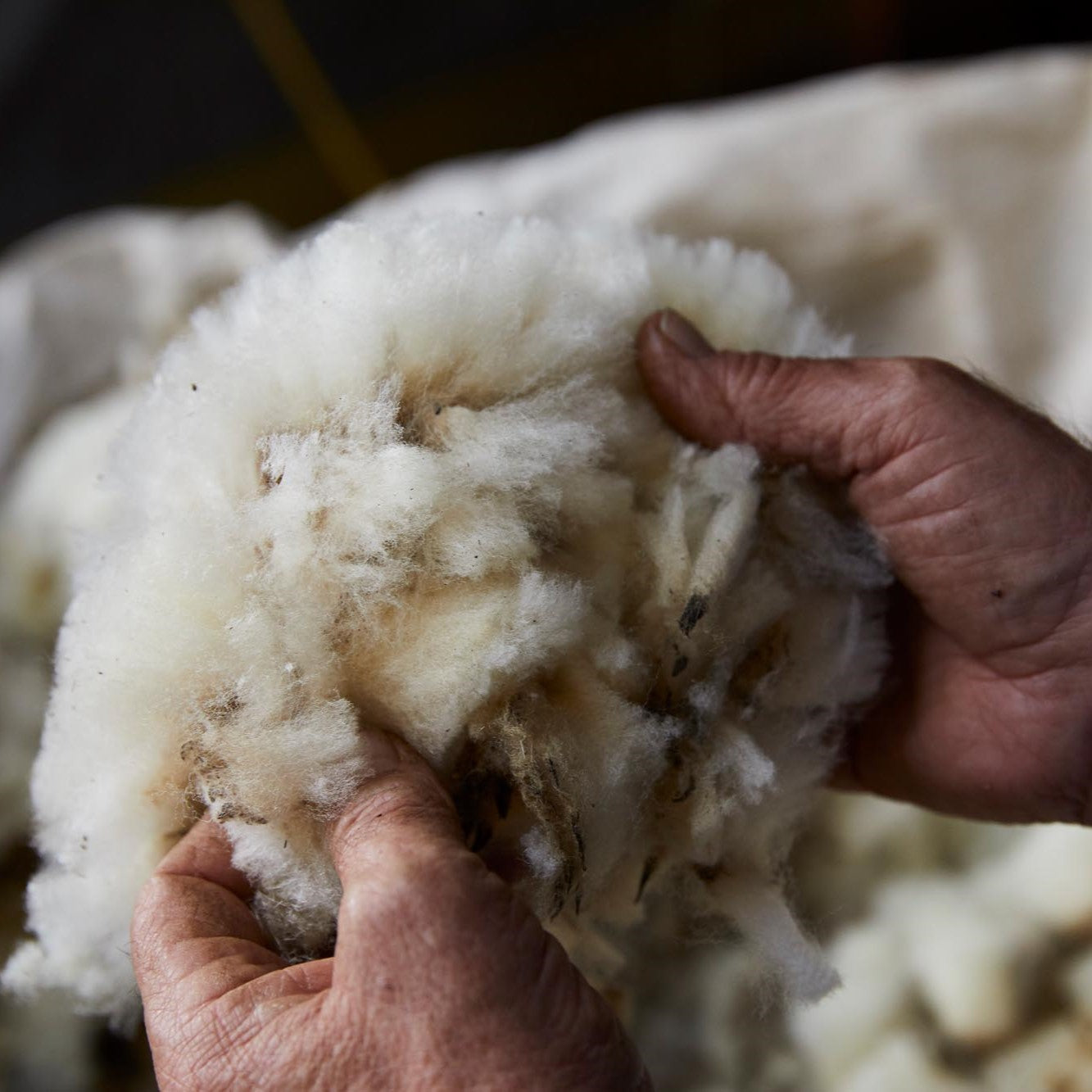
subheading
WOOL QUALITY AS A CHALLENGE
When it comes to sheep farming in Switzerland, wool quality is not usually the focus, as sheep breeds are primarily crossed and bred for meat quality and used for landscape maintenance. In addition, sheep are sheared twice a year instead of just once, usually out of tradition. This is another challenge for use in the textile industry: thin, long wool fibers of a uniform texture are essential for high-quality fabrics.

subheading
Our fabric development
Some brands have already discovered that Swiss sheep's wool is ideal for insulating clothing. We wanted to go one step further. Swiss wool was to become the main material for our jackets, combined exclusively with biodegradable materials. Because no one was producing such materials anymore, we threw ourselves into developing our own.
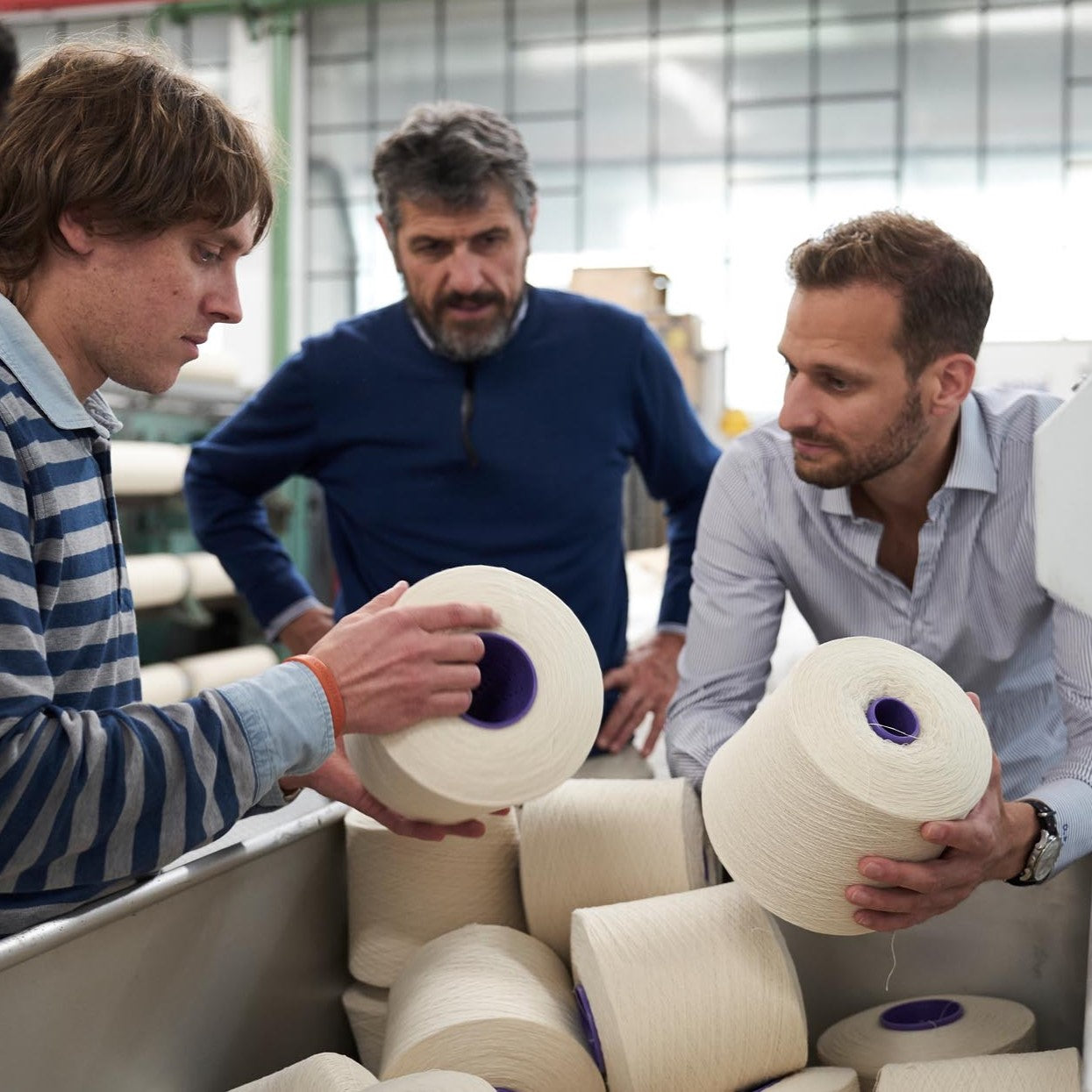
subheading
Short transport routes
We source the Swiss wool directly from central wool collection points in Switzerland. Here, the wool is collected directly from Swiss sheep farmers and purchased at a fair price. The wool is then sorted by hand and washed according to the highest environmental standards. For further processing, we work with small traditional companies in northern Italy. They know how to handle a raw material as complex as Swiss wool.
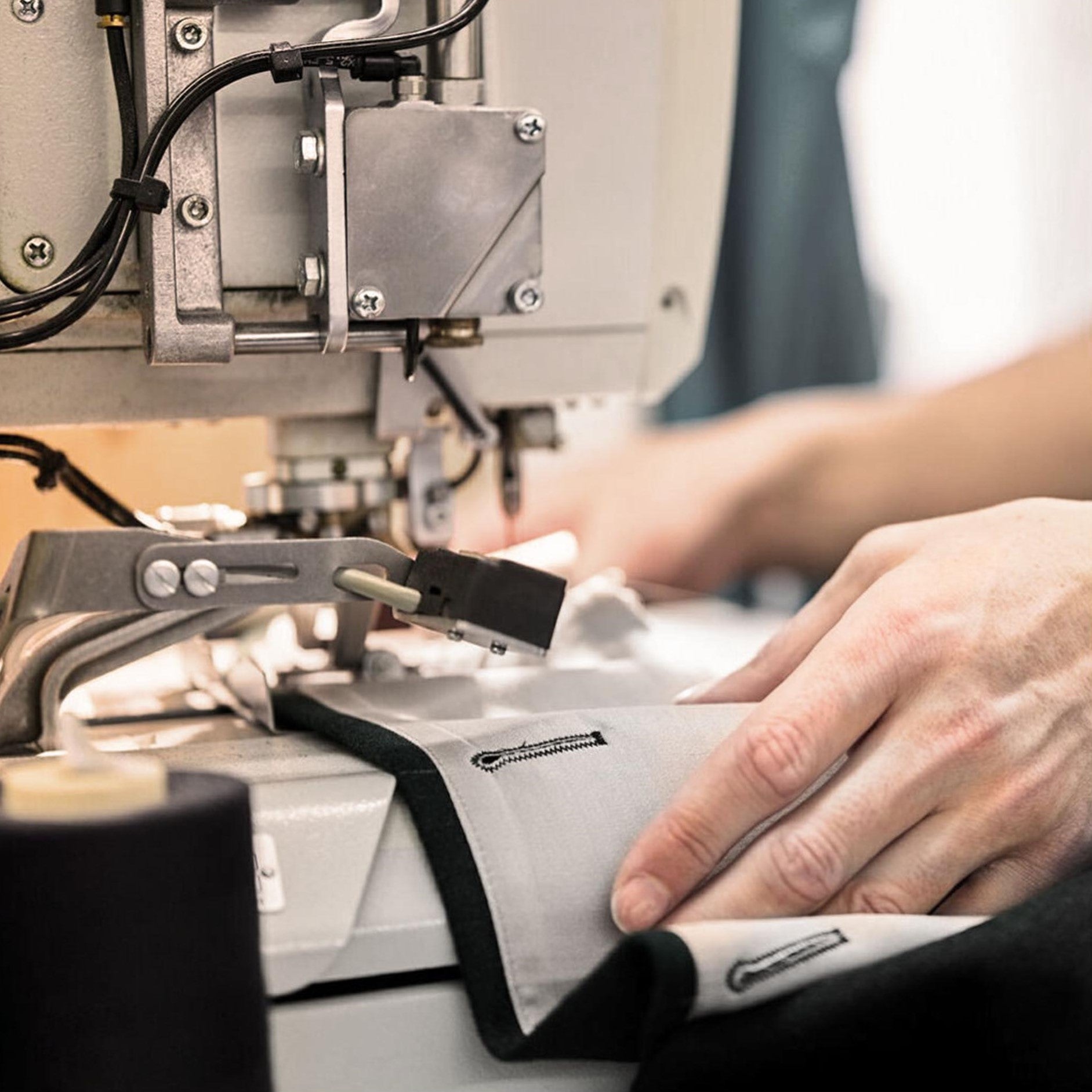
subheading
Handmade in Switzerland
Our wool jackets and coats are all made by hand in a small factory in the canton of Schwyz. Here, thanks to traditional tailoring and modern design, the most sustainable jackets for enthusiasts are created.


